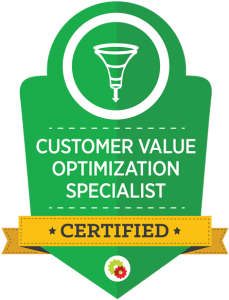Creating High-Converting Landing Pages: Best Practices and Tips
In today’s competitive digital landscape, having a high-converting landing page is crucial for any successful marketing campaign. Landing pages serve as the first impression of your brand and play a pivotal role in driving conversions—whether it’s collecting leads, promoting a product, or encouraging sign-ups. However, creating a landing page that not only attracts visitors but also converts them into customers is no easy feat. This comprehensive guide explores the best practices and expert tips to help you craft high-converting landing pages that can significantly boost your business outcomes.
Landing pages are the backbone of any digital marketing strategy, designed with a single goal: to convert visitors into leads, customers, or subscribers. Unlike a typical website page, landing pages are highly focused, providing clear and direct paths for users to take specific actions. But what makes a landing page truly effective? How can you design and optimize it to maximize conversions? From compelling headlines to strategic CTA placements, we will cover all the elements that contribute to a successful landing page, ensuring your marketing efforts yield the best possible results.
What is a Landing Page?
A landing page is a standalone web page created specifically for a marketing or advertising campaign. It’s where a visitor "lands" after clicking on a link from an email, ad, social media post, or any other source. The primary purpose of a landing page is to prompt a single action from the visitor, such as filling out a form, making a purchase, or downloading a resource.
Unlike other web pages, landing pages are stripped of distractions like navigation bars, unrelated links, or sidebars, ensuring visitors stay focused on the desired action. They are designed with conversion in mind, using targeted messaging, visuals, and CTAs to guide users towards completing a goal.
Why High-Converting Landing Pages Matter
High-converting landing pages are essential because they directly impact your marketing ROI. A well-designed landing page can significantly lower your cost per acquisition, increase lead generation, and drive higher sales. Here’s why optimizing your landing pages is crucial:
- Improved Conversion Rates: A high-converting landing page turns more visitors into customers or leads, maximizing the effectiveness of your marketing efforts.
- Better User Experience: A streamlined, well-crafted landing page offers a seamless experience, encouraging visitors to stay engaged and take action.
- Higher Return on Investment (ROI): By converting more visitors, you increase your marketing ROI, making every dollar spent on ads or promotions more valuable.
- Data-Driven Insights: Landing pages provide valuable data on visitor behavior, which can be used to refine future campaigns and strategies.
Key Elements of a High-Converting Landing Page
Creating a landing page that converts requires a deep understanding of its essential components. Each element plays a role in guiding visitors toward your desired outcome. Let’s explore the critical elements of a high-converting landing page.
Compelling and Clear Headline
Your headline is the first thing visitors see when they land on your page. It needs to grab attention, convey your offer, and encourage the visitor to stay. A compelling headline is clear, concise, and directly addresses the visitor’s needs or pain points.
- Keep it Clear and Specific: Avoid vague or generic headlines. Clearly state what you’re offering and how it benefits the user.
- Focus on the Value Proposition: Highlight the unique value or benefit your offer provides, making it clear why the visitor should take action.
Persuasive Subheadline
The subheadline works in tandem with the main headline to provide additional context and encourage users to continue reading. It should complement the headline by expanding on the offer or emphasizing a key benefit.
- Enhance the Main Message: Use the subheadline to reinforce the main headline, offering a deeper insight into the offer.
- Keep it Short and Engaging: Subheadlines should be concise yet compelling, nudging the visitor closer to taking action.
Strong Call-to-Action (CTA)
The CTA is arguably the most critical element of any landing page. It’s the button or link that directs visitors to take the desired action, such as “Sign Up,” “Get Started,” or “Download Now.” A well-crafted CTA can significantly impact conversion rates.
- Use Action-Oriented Language: Phrases like “Get Your Free Trial” or “Start Saving Today” are more compelling than generic terms like “Submit.”
- Make it Stand Out: Ensure the CTA button is prominently placed and visually distinct, using contrasting colors and bold text to draw attention.
Engaging Visuals and Multimedia
Images, videos, and graphics can enhance the overall appeal of your landing page and keep visitors engaged. Visual content can convey information quickly, evoke emotions, and create a memorable experience.
- Use High-Quality Images: Avoid stock images that look generic or outdated. Use visuals that align with your brand and message.
- Incorporate Explainer Videos: Videos can boost conversion rates by clearly demonstrating your product’s benefits or showing testimonials from satisfied customers.
Concise and Persuasive Copy
The copy on your landing page should be straightforward, persuasive, and focused on the visitor. Avoid long paragraphs and fluff. Instead, highlight the benefits of your offer, address pain points, and create a sense of urgency.
- Focus on Benefits, Not Features: Tell visitors what’s in it for them. How will your product or service solve their problems or improve their lives?
- Create Urgency: Phrases like “Limited Time Offer” or “Only a Few Spots Left” can encourage immediate action.
Trust Signals and Social Proof
Trust signals, such as customer testimonials, reviews, ratings, and case studies, help build credibility and reassure visitors that they are making the right decision. Social proof can significantly influence buying behavior, making visitors more likely to convert.
- Include Customer Testimonials: Showcase positive feedback from satisfied customers to build trust.
- Display Trust Badges: Certifications, awards, and security badges can also reassure visitors, particularly when asking for sensitive information.
Minimalistic Design and Clean Layout
A cluttered landing page can overwhelm visitors and drive them away. A minimalist design with ample white space ensures the page looks clean, professional, and easy to navigate.
- Use White Space Effectively: White space helps guide the visitor’s attention to key elements like headlines and CTAs.
- Avoid Unnecessary Distractions: Remove any elements that do not directly contribute to the conversion goal.
Mobile Optimization
With the increasing use of smartphones, it’s crucial that your landing page is fully responsive and optimized for mobile devices. A poorly optimized page can lead to high bounce rates and lost conversions.
- Responsive Design: Ensure your landing page adjusts seamlessly to various screen sizes and orientations.
- Fast Loading Times: A slow-loading page can deter users. Optimize images and code to ensure quick load times on all devices.
Best Practices for Creating High-Converting Landing Pages
Now that we’ve covered the key elements, let’s dive into the best practices that will help you create landing pages that convert visitors into leads and customers.
1. Keep It Focused
Landing pages should have one clear goal, whether it’s generating leads, selling a product, or collecting email subscribers. Avoid adding multiple CTAs or distracting elements that can dilute your message.
- One Page, One Goal: Stick to a single objective to keep visitors focused and guide them toward the desired action.
- Remove Navigation Menus: Eliminate site navigation and other links that could divert visitors away from the page.
2. A/B Test Everything
A/B testing involves comparing two versions of a landing page to see which performs better. This method allows you to optimize headlines, CTAs, images, and other elements to achieve the highest conversion rates.
- Test One Element at a Time: Focus on one variable at a time, such as button color, headline copy, or form length, to identify what drives conversions.
- Use Data to Make Decisions: Rely on data from A/B tests to make informed changes rather than guessing what might work.
3. Optimize the Form
If your landing page includes a form, its design and length can significantly impact conversion rates. Too many fields can overwhelm visitors, leading to lower completion rates.
- Keep Forms Short: Only ask for the information you absolutely need. Reducing the number of fields can boost conversions.
- Offer a Clear Benefit: Let users know what they’ll receive in exchange for filling out the form, such as a free eBook, consultation, or discount.
4. Create a Seamless User Experience
The user experience on your landing page should be smooth, intuitive, and frustration-free. Ensure that all elements are working as intended and that the path to conversion is clear.
- Check for Broken Links: Ensure that all buttons, forms, and links are functional and lead to the correct destinations.
- Test on Multiple Devices: Test the page on desktops, tablets, and smartphones to ensure a consistent experience across all platforms.
5. Leverage Analytics
Use analytics tools like Google Analytics, Hotjar, or Crazy Egg to monitor visitor behavior on your landing page. These tools provide insights into where users are clicking, how long they stay, and where they drop off.
- Track Key Metrics: Keep an eye on bounce rates, conversion rates, and average time on page to gauge your landing page’s effectiveness.
- Heatmaps and Click Maps: These visual tools show which parts of your landing page are getting the most attention, allowing you to optimize placement for key elements like CTAs.
Common Mistakes to Avoid When Creating Landing Pages
Creating a high-converting landing page isn’t without its pitfalls. Avoid these common mistakes to ensure your landing page performs at its best.
Too Much Information
Cramming too much information into your landing page can overwhelm visitors. Keep it concise, focusing on the essentials that drive your message home.
Slow Load Times
A slow-loading landing page can be a conversion killer. Optimize images, reduce redirects, and leverage caching to ensure your page loads quickly.
Generic CTAs
CTAs like “Submit” or “Click Here” lack impact. Use action-oriented and benefit-driven CTAs that clearly state what the user will gain.
Ignoring Mobile Users
Failing to optimize your landing page for mobile can result in a poor experience for a significant portion of your audience. Ensure your page is responsive and user-friendly on all devices.
FAQs
What is a landing page, and why is it important?
A landing page is a standalone page designed to prompt a specific action, such as collecting leads or driving sales. It’s important because it focuses on conversions, making your marketing efforts more effective.
How do I create a high-converting landing page?
To create a high-converting landing page, focus on a clear headline, strong CTA, persuasive copy, engaging visuals, and trust signals. Keep the design simple, mobile-friendly, and free of distractions.
What are the best practices for landing page forms?
Keep forms short, only asking for essential information. Use clear labels, and ensure the form’s design is simple and intuitive.
How can A/B testing improve landing page performance?
A/B testing allows you to compare different versions of your landing page to identify which elements drive higher conversions, enabling you to make data-driven improvements.
What should I avoid when creating landing pages?
Avoid cluttered designs, slow load times, generic CTAs, and failing to optimize for mobile. Ensure the landing page has a single, clear focus to maximize conversions.
How can analytics help optimize my landing page?
Analytics tools provide insights into user behavior, helping you identify areas for improvement, optimize key elements, and make adjustments that boost conversion rates.
Conclusion
Creating high-converting landing pages is both an art and a science, requiring attention to detail, testing, and a deep understanding of your audience’s needs. By following the best practices and tips outlined in this guide, you can craft landing pages that not only attract visitors but also turn them into loyal customers. Remember, a successful landing page is one that delivers a seamless, engaging, and persuasive experience, guiding users toward taking that crucial next step.











